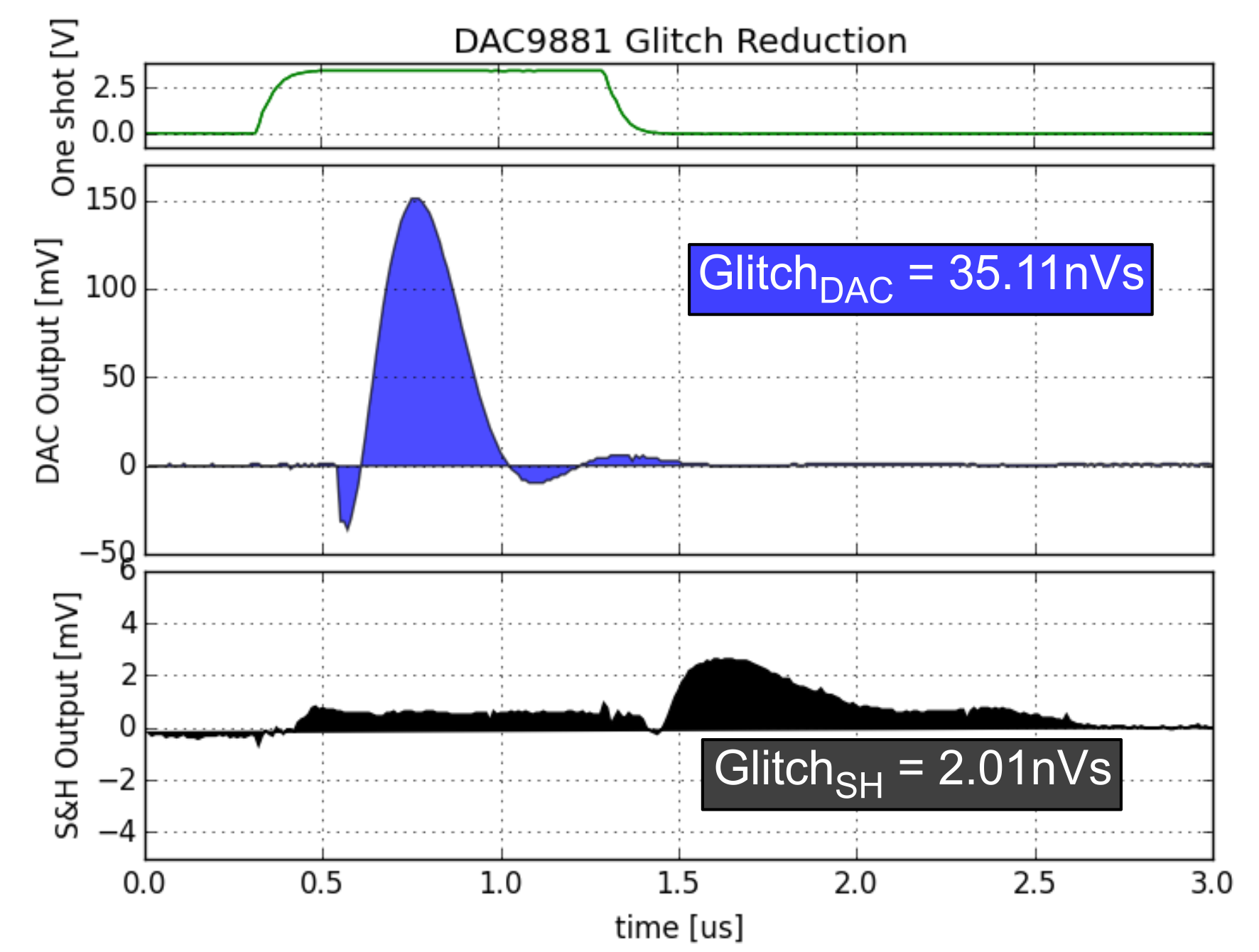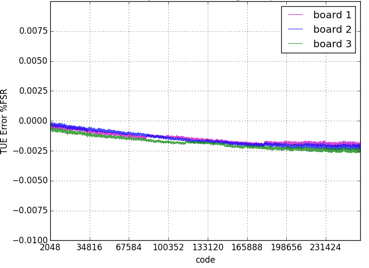JAJSI70C May 2008 – November 2019 DAC9881
PRODUCTION DATA.
- 1 特長
- 2 アプリケーション
- 3 概要
- 4 改訂履歴
- 5 概要(続き)
- 6 Pin Configuration and Functions
-
7 Specifications
- 7.1 Absolute Maximum Ratings
- 7.2 ESD Ratings
- 7.3 Recommended Operating Conditions
- 7.4 Thermal Information
- 7.5 Electrical Characteristics: AVDD = 5 V
- 7.6 Electrical Characteristics: AVDD = 2.7 V
- 7.7 Timing Requirements—Standalone Operation Without SDO
- 7.8 Timing Requirements—Standalone Operation With SDO and Daisy-Chain Mode
- 7.9 Typical Characteristics: AVDD = 5 V
- 7.10 Typical Characteristics: AVDD = 2.7 V
-
8 Detailed Description
- 8.1 Overview
- 8.2 Functional Block Diagram
- 8.3 Feature Description
- 8.4 Device Functional Modes
- 9 Application and Implementation
- 10Power Supply Recommendations
- 11Layout
- 12デバイスおよびドキュメントのサポート
- 13メカニカル、パッケージ、および注文情報
9.2.1.3 Application Curves
Glitch reduction and total unadjusted error (TUE) plots of the solution presented in Sample and Hold Glitch Reduction for Precision Outputs Design Guide (TIDU022) is shown in the following plots. The glitch area is reduced from 35.11 nVs to 2.01 nVs.


| CH = 8.2 nF | RS = 14.7 Ω |
(Top) Digital Signal One-Shot Pulse; (Middle) DAC Output Glitch; (Bottom) S-H Output Glitch